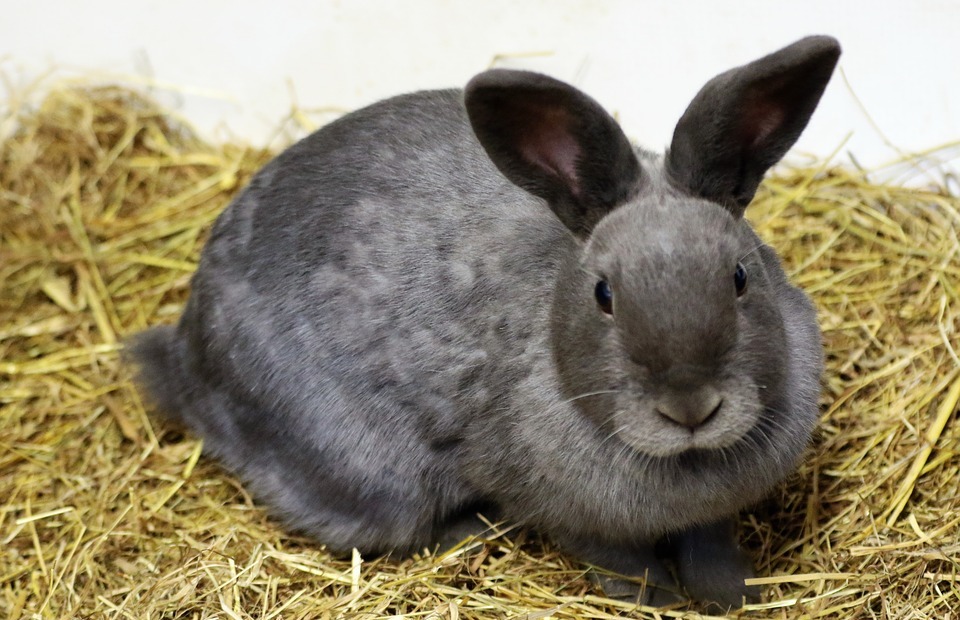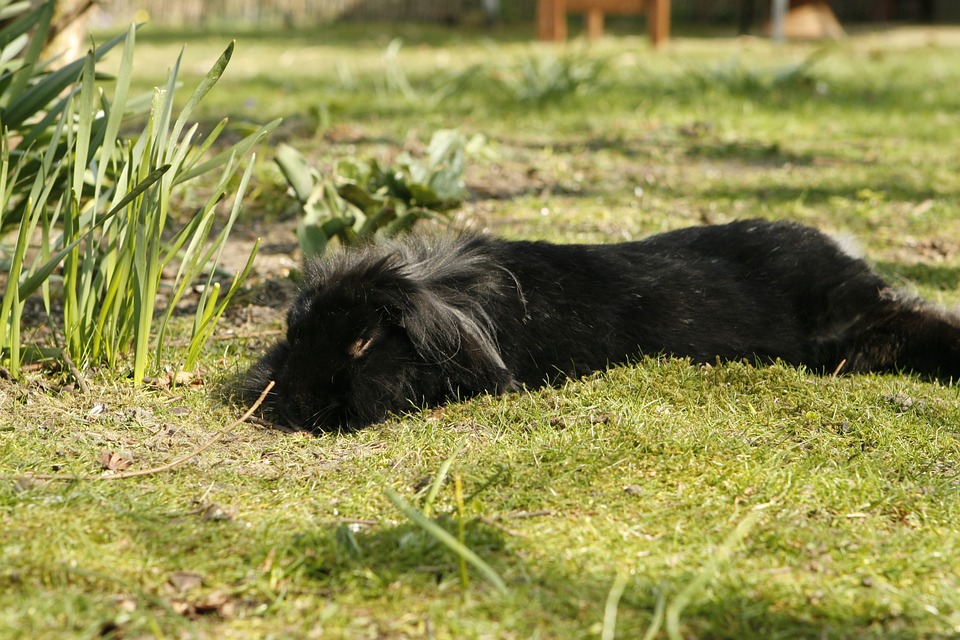This article explores the often-misunderstood classification of rabbits, delving into the defining characteristics of rodents and comparing them to the unique features of rabbits. We'll unravel the evolutionary history of both groups, revealing why these adorable creatures are not rodents, but rather belong to a distinct and fascinating order. Prepare to discover the surprising truth behind the rabbit enigma!
Part 1: The World of Rodents: Defining Traits and Diversity

1.1 Defining Rodentia: A Look at the Characteristics
Rodentia, the largest order of mammals, boasts over 2,277 species inhabiting diverse ecosystems worldwide. These creatures are instantly recognisable by their constantly growing incisor teeth, a defining feature that sets them apart from other mammals. Their upper incisors are designed for gnawing, a behaviour essential for their survival, as they rely on vegetation for their diet.
- Incisor Teeth: Rodents possess a unique pair of chisel-like incisor teeth located in the front of their mouths. These teeth grow continuously throughout their lives, requiring constant gnawing to keep them worn down.
- Diastema: A noticeable gap separates the incisors from the cheek teeth, allowing for efficient chewing and manipulation of food. This space is called a diastema, a feature characteristic of rodents.
- Molars and Premolars: Behind the incisors, rodents have molars and premolars designed for grinding and crushing plant matter. These teeth are usually flat and broad, enabling them to effectively break down tough vegetation.
- High Reproduction Rate: Rodents are known for their remarkable ability to reproduce rapidly, often giving birth to multiple offspring. This prolific breeding ensures the continuation of their species, even in challenging environments.
- Adaptive Diets: Depending on the species, rodents exhibit a wide range of dietary habits, consuming seeds, nuts, fruits, vegetables, and even insects. Their adaptability allows them to thrive in various habitats.
1.2 The Order Rodentia: A Glimpse into its Diversity
The order Rodentia comprises a diverse array of species, each with its own unique adaptations and behaviours. From the familiar house mouse to the massive capybara, the largest living rodent, this order displays incredible variation in size, shape, and lifestyle.
- Mice and Rats: These small, agile creatures are known for their intelligence and adaptability, often thriving in urban environments alongside humans.
- Squirrels: From the tree-dwelling grey squirrel to the ground-dwelling chipmunk, squirrels are known for their playful nature and their ability to store food for later consumption.
- Beavers: These semi-aquatic rodents are renowned for their impressive dam-building abilities, shaping the landscape and creating habitats for other animals.
- Guinea Pigs: Originally domesticated in the Andes Mountains, guinea pigs are social animals often kept as pets due to their gentle nature and playful personality.
- Hamsters: These small, nocturnal rodents are popular pets for their cute appearance and their ability to store food in their cheek pouches.
Part 2: Unmasking the Rabbit: A Deeper Look at Lagomorphs

2.1 The Order Lagomorpha: A Distinct Lineage
Rabbits, hares, and pikas belong to the order Lagomorpha, a group closely related to rodents but possessing unique features that distinguish them. This order shares a common ancestor with rodents, highlighting a deep evolutionary connection.
- Double Incisor Row: A hallmark of lagomorphs is the presence of two pairs of upper incisors, a feature absent in rodents. This adaptation aids in nibbling and grooming, reflecting the specialised feeding habits of these animals. The second pair of incisors is located behind the first pair, adding to the unique morphology of their teeth.
- Modified Molar Structure: Lagomorphs have a distinct molar structure compared to rodents, displaying more complex patterns of cusps and ridges. This difference reflects their adaptation to a predominantly herbivorous diet, enabling efficient grinding of tough plant material.
- Caecotrophy: The Secret to Cellulose Digestion: Lagomorphs employ a fascinating digestive strategy called caecotrophy. They produce soft faecal pellets known as caecotrophs, which are rich in nutrients and digested a second time. This process allows them to extract maximum nutrition from their herbivorous diet, particularly cellulose, the primary component of plant cell walls.
2.2 Unveiling the Similarities: Shared Traits with Rodents
Despite their distinct order, rabbits share certain characteristics with rodents, which often lead to confusion about their classification. These similarities underscore the close evolutionary relationship between these two groups.
- Herbivorous Diet: Both lagomorphs and rodents are primarily herbivores, relying on vegetation for their sustenance. Their teeth and digestive systems are adapted for breaking down plant matter, reflecting their common ancestry and shared dietary habits.
- Small Body Size: Many species of both rodents and lagomorphs exhibit a small body size, making them agile and adaptable to various environments. This size allows for easy movement through tight spaces and provides a greater chance of escaping predators.
- Burrowing Behaviour: Some rabbits and rodents engage in burrowing behaviour, creating underground shelters for protection and nesting. This common trait highlights the importance of shelter for both groups, enabling them to escape harsh conditions and predators.
- Nocturnal Activity: Many rabbits and rodents are nocturnal, becoming active at night to avoid predators and forage for food. This shared behaviour underscores the challenges of living in ecosystems where they are vulnerable to predation during daylight hours.
Part 3: The Scientific Perspective: Understanding the Distinction
3.1 The Evolutionary Connection: A Shared Ancestor
While rabbits and rodents belong to different orders, they share a common ancestor that lived millions of years ago. This shared lineage explains the similarities they possess, highlighting their close evolutionary relationship. Over time, these two groups diverged, developing unique adaptations that suited their respective environments and dietary needs.
3.2 The Molecular Evidence: DNA Analysis Confirms the Difference
Modern genetic analysis has provided compelling evidence for the distinct classification of rabbits and rodents. DNA studies have revealed significant differences in their genetic makeup, confirming their separation into distinct orders. The molecular evidence underscores the deep evolutionary divergence that separates these two groups.
3.3 The Anatomical Distinction: Skull and Teeth Reveal the Truth
Beyond DNA, anatomical differences also contribute to the scientific understanding of the distinct lineages of rabbits and rodents. The shape and structure of their skulls and teeth, particularly the number and arrangement of incisors, provide further evidence for their evolutionary divergence. These anatomical differences are a testament to the adaptations that have evolved over millions of years, shaping the unique characteristics of each group.
Part 4: Why Classification Matters: Implications for Science and Conservation
4.1 Addressing Misconceptions: Unveiling the Truth
The common misconception that rabbits are rodents is widespread, leading to inaccurate information about these fascinating creatures. Understanding their scientific classification is crucial for addressing these misconceptions and promoting accurate knowledge about rabbits, their behaviour, and their needs.
4.2 Scientific Research: Impact on Conservation and Management
Accurate classification is essential for scientific research, especially in the context of conservation and management of animal populations. By understanding the unique characteristics and evolutionary history of rabbits, scientists can develop effective strategies for protecting and managing their populations, ensuring their long-term survival.
4.3 Pet Care: Tailoring Care to Specific Needs
Knowing whether a rabbit is a rodent or not is vital for pet owners. Rabbits have distinct nutritional needs and require specific care practices compared to rodents. Understanding their unique requirements allows pet owners to provide the best possible care for their furry companions, promoting their health and well-being.
Part 5: Unveiling the Myths: Debunking Common Misconceptions
5.1 Are Rabbits Rodents?
As established earlier, rabbits are not rodents. They belong to the order Lagomorpha, a distinct group that shares a common ancestor with rodents but has evolved its own unique characteristics.
5.2 What are the Key Differences Between Rabbits and Rodents?
The most significant difference between rabbits and rodents is the presence of two pairs of upper incisors in rabbits, as opposed to the single pair in rodents. Additionally, their molar structures and digestive systems differ, reflecting their adaptations for digesting a predominantly herbivorous diet.
5.3 Are Rabbits Related to Rodents?
While not rodents, rabbits are related to rodents, sharing a common ancestor that lived millions of years ago. This shared lineage explains the similarities they share, such as their herbivorous diet and burrowing behaviour. However, they have diverged into distinct evolutionary lineages over time, resulting in unique adaptations and characteristics.
5.4 Why are Rabbits Often Confused with Rodents?
The confusion arises from the fact that rabbits share some superficial similarities with rodents, such as their small size, herbivorous diet, and burrowing behaviour. These common traits, while not unique to rodents, contribute to the misconception that rabbits belong to the same group.
5.5 Are Rabbits Dangerous to Humans?
Rabbits are generally not dangerous to humans. They are gentle creatures that prefer to avoid confrontation. However, they may bite if they feel threatened or are not handled properly.
5.6 Do Rabbits Bite?
Rabbits are not naturally aggressive but can bite if they feel threatened or are not handled properly. Proper training and socialization are crucial for preventing biting behaviour, ensuring a positive interaction between humans and rabbits.
5.7 How Long Do Rabbits Live?
The lifespan of a rabbit varies depending on its breed, genetics, and the care it receives. On average, house rabbits live for 5-10 years, but some breeds can live longer, reaching up to 12 years.
5.8 What is the Best Way to Care for a Rabbit?
Rabbits need a spacious cage with comfortable bedding, a balanced diet of hay, fresh vegetables, and pellets, and regular veterinary check-ups. They also require playtime, social interaction, and a safe and stimulating environment to thrive. Understanding the specific needs of rabbits as lagomorphs is crucial for providing them with optimal care.
Everyone is watching
-

Do Rabbits Lay Eggs? (The Surprising Truth)
OTHER TYPES OF PETSThis article will unravel the common misconception that rabbits lay eggs, exploring the fascinating world of r...
-

Can Rabbits Eat Grapes? A Guide to Safe Rabbit Treats
OTHER TYPES OF PETSThis comprehensive guide will explore the safety and suitability of grapes for rabbits, providing detailed inf...
-

What's a Group of Rabbits Called? (A Comprehensive Guide)
OTHER TYPES OF PETSThis article delves into the fascinating world of rabbits, exploring the various terms used to describe a grou...
-

Predators That Hunt Rabbits: A Guide to Natural Enemies
OTHER TYPES OF PETSI've always been fascinated by the circle of life, that delicate dance between predator and prey. Growing up ...
-

Are Rabbits Nocturnal Animals?
OTHER TYPES OF PETSThe question of whether rabbits are nocturnal animals is a fascinating one, with a surprisingly complex answer...
